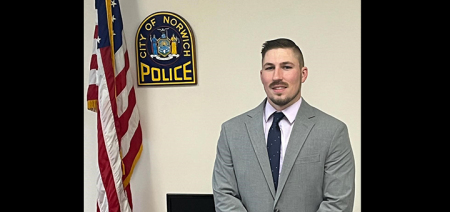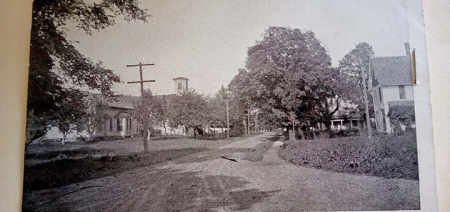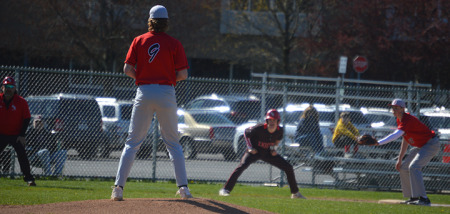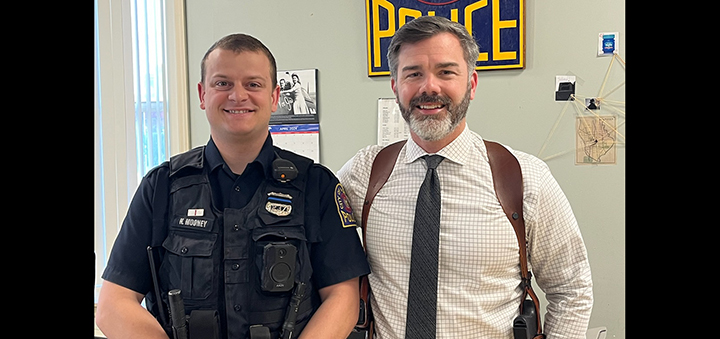Tilting At Windmills: The Case Of Ashes To Ashes
Published:
February 11th, 2022
By:
Shelly Reuben

The Loomis case was top heavy with experts from day one, including three medical examiners, two forensic dentists, an automotive engineer, an authority on cremation and, of course, my late husband Charlie King, to determine the origin and cause of the fire.
But even before Charlie was brought into the case, there was enough drama to qualify it as a Crime Movie of the Week:
A bar at the edge of the woods named “Ashes.”
A popular local attorney – Roger Loomis, co-owner of Ashes – suddenly missing, in hiding, or dead.
The fire-ravaged shell of a Buick discovered on the shoulder of a back road at 7:00 a.m.
A corpse inside that car with its jaw broken and its incinerated body stripped of all identification.
Dental records mysteriously missing from the office of a dentist who had never before lost an X-ray.
It began as a product liability lawsuit brought by Roger Loomis’s widow against the manufacturer of the Buick (for clarification, this fire occurred before automobile components were made primarily of plastic, as they are now). The deceased, according to Adele Loomis – all names changed – was her husband. The car was so new, it had been driven home from the dealership only the day before. According to the lawsuit, a defect in the vehicle’s design (unspecified) initiated a fire somewhere in the car (unspecified), which spread from that point and then somehow (unspecified) caused Roger Loomis’s death.
Where did the fire start? How did it start? How did it spread? Why did Roger just sit inside a burning vehicle like a crash dummy and not attempt to escape?
All good questions.
Because of the nature of product liability law, vague accusations were permitted from plaintiffs (the people doing the suing), and it was up to the defense (the guys being sued), to refute those claims. Doing that, however, would require in-depth examinations of the two major victims of the fire:
One: the body of the deceased.
Two: the incinerated remains of the car.
Gregory Steele, the attorney representing the defense (the company that manufactured the car), was a handsome, honest, fortyish man with thick black hair and smiling dark eyes. He was very, very smart. Over the years, we worked with him on many cases. Greg loved to get into a flannel shirt, a pair of jeans, and sod-kicking boots, and go along with Charlie to fire scenes. The dirtier the better. Seeing them work together was like watching a couple of cowboys saddle up to rid the Range of rustlers. In my mind, Charlie wore the sheriff’s badge, Greg the deputy’s, and together, they got the job done.
In reality, however, it was the other way around. Gregory Steele was the client, and we worked for him.
To prepare his defense, the first thing that Greg did was get the Loomis file from the coroner’s office in order to identify the remains. Since the fire had been declared accidental, we knew it would not be a large file, but we had not expected it to be so small. The only thing it contained was an X-ray of the left mandible of the corpse.
Not a lot to work with, but more than nothing, so Greg brought the X-ray to two forensic dentists for analysis. The first said, “Hm. Interesting. It’s clear that the victim’s jaw was broken before the fire.” The second, after being told that Loomis’s dental records had gone missing, said, “It doesn’t matter who he was, because he’s been murdered.”
Murdered.
Not overcome by flames or fumes in an accidental fire. Rubbed out. Whacked. Bumped off. Done in. Iced. Offed. Murdered.
And how murdered? By a blow to the mandible.
Since those facts would have to come out at the trial, our defense attorney now needed to ask even more specific questions to clarify his position for a jury. Such as: how do bodies burn? (Most of the remains found in the car were burned down to white bone) • What temperatures are reached in a crematorium? • What happens to a cremated jawbone subjected to such intense heat? (Hint … it doesn’t crack.)
Greg also had to prove that the man in the car had been assaulted prior to the fire, that his jaw had been fractured, and that the dead man, as well as the brand-new Buick in which he was found, were victims of arson.
Proving the fire incendiary was the only missing piece in the “How Did It Happen?” puzzle that Gregory Steele was putting together. Finding that piece was Charlie King’s area of expertise.
Charlie was provided with dozens of excellent quality color photographs taken by the local Fire Department of the Buick after they extinguished the fire. Since the car was junked long before Mrs. Loomis instituted her lawsuit, those photos were the only evidence left of the fire scene.
After meticulously analyzing them, Charlie found seven points of origin of the fire.
When fire investigators discover two separate and distinct fires that are not in any way connected to each other, it is always an indication of arson. Seven such points of origin at one fire scene are an embarrassment of riches. These included splash marks of flammable liquid in the engine compartment • All four tires being completely consumed by flames, including the tire pads • Fire so intense under the driver’s seat that the manual angle adjustment melted and the seat fell back • Roof buckled over the passenger compartment • Fire inside the trunk where the spare tire was completely incinerated. And so on.
Fire naturally burns up and out. So, other than someone deliberately splashing or pouring an accelerant on the exterior and interior of the Buick, there could be no natural explanation for the burn patterns in Roger Loomis’s car. Which meant that Gregory Steele was now able to add two more components to his arguments at the trial: First, that the man in the automobile was the victim of a homicide. Second, that regardless of whether or not the jury believed the man was murdered, the car, itself, had been “torched.”
All of the expert witnesses that Greg brought into the case were critical to the defense, but my favorite was the crematorium guy, who looked a little too much like a mortician and obviously enjoyed his job. He cheerfully explained that for a body to be totally cremated, it would have to burn at temperatures of 1,400 to 1800 degrees for over two hours. This clearly would have been impossible in an accidental car fire, as within 30 minutes, all of the combustibles are usually consumed and the fire has gone out.
After the plaintiff and the defense attorneys rested their cases, the jury came back with a unanimous verdict in favor of our client. Even better, our civil case became a criminal case, and the district attorney got a court order to exhume the body, because they now had an unsolved homicide on their hands.
Before Roger Loomis’s funeral, the suspiciously cracked jawbone was put in an evidence bag, which was put in a box and buried along with the rest of the deceased’s remains. However, at the time of the exhumation, the box and the evidence bag were found in the coffin, but the mandible was missing. No explanation was ever given for its disappearance, and no one ever established whose mandible it was.
Roger Loomis, owner of a bar called Ashes, became ashes himself. Or did he? Had he really died in that fire? Or had he murdered someone else, hoping the body would be misidentified and he would be presumed dead? Was Roger cavorting with bimbos in Rio de Janeiro? Or was he waiting for his wife to join him after they had won (or so they’d hoped) a huge monetary verdict in their favor?
Why were Loomis’s dental records missing from the dentist’s office? Why was the mandible stolen from the grave?
And where, if he was still alive, was Roger Loomis now?
Copyright © Shelly Reuben, 2022. Shelly Reuben’s books have been nominated for Edgar, Prometheus, and Falcon awards. For more about her writing, visit www.shellyreuben.com
Author: Shelly Reuben - More From This Author
Comments










